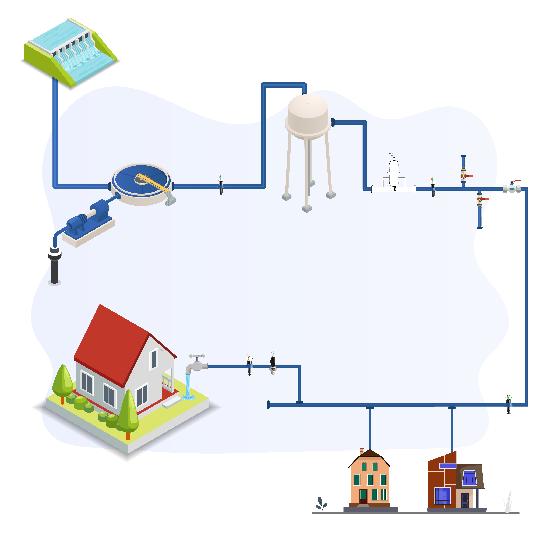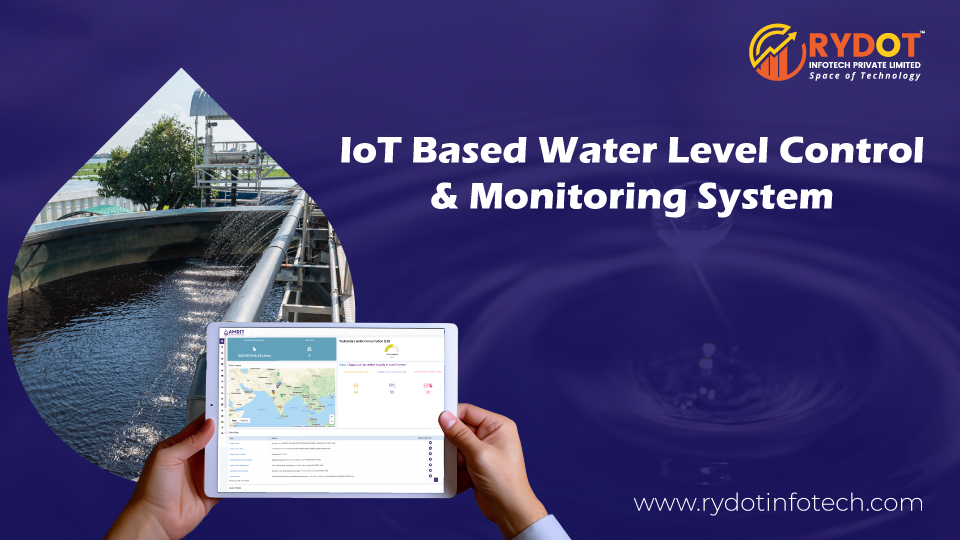![]()
Today, the world is witnessing a shortage of water. Every year due to climate change the humidity on the planet is increasing, which has a significant impact on the water.
On the other hand, people living in small towns and villages suffer from a lack of water facilities, which impacts the agriculture sector as well.
As a result, IoT technology allows businesses, organizations, households, and farmers to monitor the water levels that eventually help to store water and manage the resources.
And to do it, utilizing a water level monitoring system enabled by IoT technology for storing water into tanks can be game-changing.
A tank monitoring system, integrated by a leading IoT app development company, can help monitor and optimize operations, ensuring that water is sufficiently utilized.
But what is a water level monitoring system? And how does it work? Let’s take a look at it…
What is meant by a water level monitoring system? & How does it work?
A water level monitoring system is a device that monitors the water tanks and other water storage facilities using IoT-based sensors. The device is implanted in a specific location where the water tanks are available and the tank monitoring system measures the amount of water present in the tank. It ensures the level of water does not fall down and overflow, it should be maintained at certain thresholds.
As a result, It reveals the important data related to the water level and transforms it into a cloud-based system from where the data is shared to mobile devices for remote monitoring. There are many ways the water monitoring system can be utilized. For instance, by installing IoT-based water level monitoring systems in all the municipal water tank locations, the government can monitor and measure the level of water in real time and they can re-fill the tank on time.
However, these also help them to evaluate the amount of water consumption in the area.
But why use water level monitoring? What are the benefits of utilizing the water level monitoring? Let’s figure it out…

What are the benefits of utilizing a water level monitoring system?
There are various benefits of utilizingwater level monitoring system using IoT. There are numerous key advantages that can change the way industries and organizations deal with water.
#1 Improved efficiency:
The water tank level control system is highly efficient in terms of reducing human errors and eliminating manual work. The smart water level sensorsdo their job by sending alerts for overflowing water and re-filling the water.
It can also be fully automated by allowing the devices to maintain the stability of water based on alerts that smart water level sensors detect.
#2 Cost saving:
IoT-based water tank monitoring systems can be operated in fully automatic mode which reduces human tasks, and leads to saving time and money for businesses.
#3 Increased safety:
Usually, tanks are managed manually, whether it is re-filling the water or stopping the overflow of the tank, and these involve the need to climb the tank or enter into confined spaces which can be riskier.
As a result, the water level monitoring system reduces the risk of incidents and injuries.
#4 Environmental protection:
Businesses can lessen the likelihood of spills and leaks, lessening their environmental effect, by keeping an eye on tank levels.
However, due to the proper utilization of technology, environmental protection can taken care of.
#5 Better decision-making
Imagine a business as a big puzzle. To solve the puzzle and make smart choices, like knowing when to get know when to fix things, the business needs information right away.
It helps commercial businesses and farmers to evaluate how much water is in their tanks. And that led them to decide what to do and when to do it.

Different types of applications for water level monitoring
There are many types of water monitoring applications available ranging from simple float switches to IoT-based ultrasonic sensors.
Some systems are structured and designed especially for commercial purposes while others are for residential purposes as well.
Oil and Fuel:
It is essential to monitor the Oil and fuel tanks. Any leakage in the tanks or other suspicious activity can damage the entire oil and fuel storage.
And that will cost way more than a normal water tank. As a result, big oil and fuel industries utilize wireless tank level monitoring to monitor oil and fuel storage tanks which ensures that the appropriate and necessary level of oil and fuels are filled with no leaks and spills on the tank.
Agriculture:
Supplying water to the crops constantly is important, to ensure proper crop irrigation. As a result, the tank monitoring system allows farmers to fulfill the proper water supplies and also to ensure that the irrigation tank is supplied with water adequately.
Furthermore, By keeping an eye on tank levels and making sure the right amount of these chemicals is being applied, farmers may maximize the usage of fertilizer and pesticides.
Water Utilities:
The water tank level control system detects and tracks levels of the water present in the tank in real-time and ensures an adequate water supply, during the high water demand or urgency.
Additionally, it aids in avoiding overflows and underflows, which may cause water loss and huge costs. The most effective way of utilizing this is to detect water leaks.
“Take control of water conservation! Join us in monitoring water levels and safeguarding our future. Act now to ensure sustainable water resources for generations to come.”
Chemicals:
Water level monitoring embedded with chemical sensors detects certain substances present in the water based on their electrochemical or optical properties. However, there are many other types of sensors that can be embedded as per the use cases.
Residential and Commercial:
Most often, the applications of IoT-based water tank monitoring systems are used for residential and commercial purposes where a constant water supply is needed. Furthermore, using rainwater harvesting the water has been stored in the large tanks and managed with the water level monitoring system.
Wrapping-up
Although, utilizing a water level monitoring system can be game-changing for your business because water shortage and water management is the biggest issue that can be solved by this application. As a result, “Water Quality Monitoring Market size was valued at USD 5.13 Billion in 2021 and is projected to reach USD 9.12 Billion by 2030, growing at a CAGR of 6.6% from 2022 to 2030.”
Rydot Infotech provide IoT based Smart Water Supply Measurement and Quality Monitoring System to real-time data for generating valuable insight for making better decision quickly. Contact US Today.

